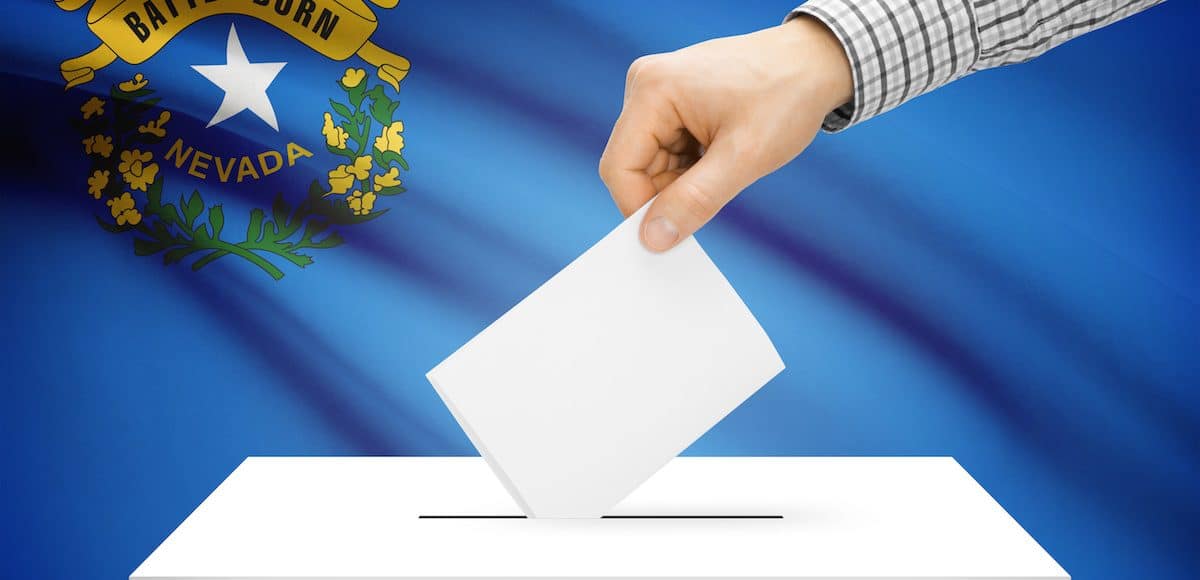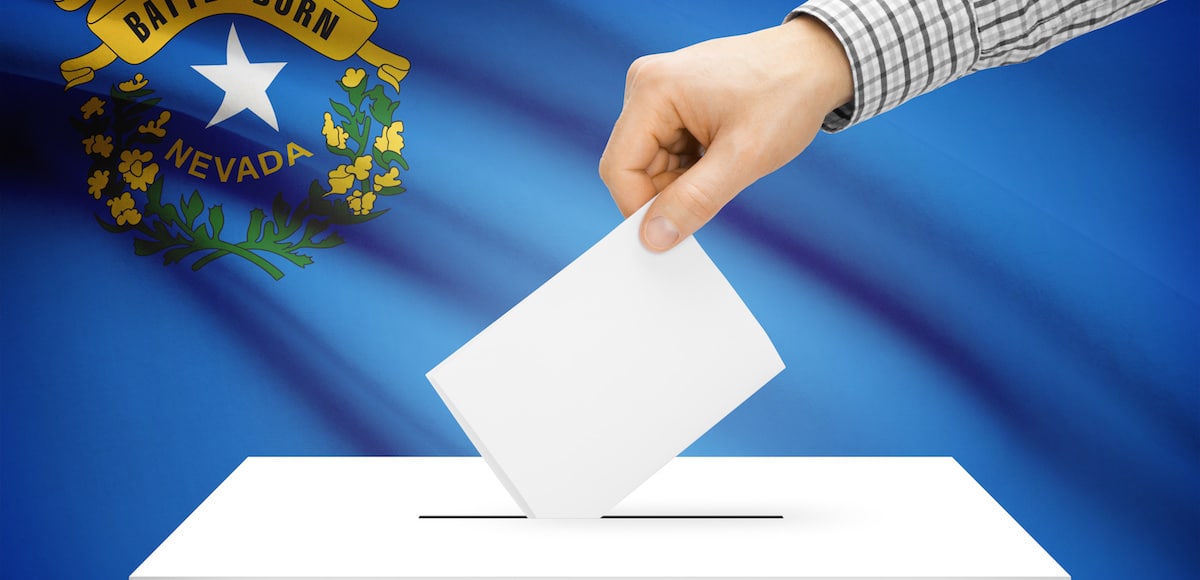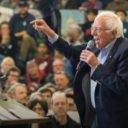

Voting, elections and state polls concept: Ballot box with state flag in the background – Nevada. (Photo: AdobeStock)
Early voting in The Silver State has ended and the projection model shows the U.S. Senate election in Nevada remains a true battleground. Much of the media analysis of the race has focused on comparisons to the 2014 midterms, a low-turnout cycle in which no election for U.S. Senate was held statewide.
Our analysis has found 2012 and 2016 more comparable and, even still, we find ourselves right back where we started: it’s all about the independent vote.
Incumbent Senator Dean Heller, R-Nev., who is one of the best retail politicians in the country, will need a margin among independent voters that Democratic candidates are hoping for in other states and districts across the country.
And yet, it’s very doable because it’s a margin that very much mirrors Senator Heller’s historic vote share among this key group in a state where it’s needed to offset a slightly more Democratic partisan lean.
Here’s what it boils down to.
As in many other states, beginning with North Dakota, the controversy over the confirmation of Associate Justice Brett Kavanaugh to the U.S. Supreme Court significantly reduced the potential for moderate Republican women to become a rich crossover target demographic.
That being said, the state and closeness of the race can be underscored with a brief and simple demonstration. Let’s first take a look at the early vote.
[su_table responsive=”yes”]
| Party | In-Person Early | Absentee Ballots | Mail-Ins | Total |
|---|---|---|---|---|
| Democrat | 233,061 | 26,740 | 626 | 260,427 |
| Percent | 42.06% | 37.49% | 21.28% | |
| Republican | 204,930 | 31,521 | 1,684 | 238,135 |
| Percent | 36.99% | 44.19% | 57.24% | |
| Other | 116,083 | 13,065 | 632 | 130,381 |
| Percent | 20.95% | 18.32% | 21.48% | |
| Edge | D+28,131 | R+4,781 | R+1,058 | D+22,292 |
[/su_table]
Republicans have generally carried the non-party affiliated independent vote in Nevada for several straight cycles. But along with base turnout, the margin among independents decided the ultimate outcome.
President Donald Trump lost Nevada to Hillary Clinton in 2016 by 2.4 points, 47.9% to 45.5%. But he won the independent vote by a large margin, 53% to 37%. Democratic Senator Catherine Cortez Masto defeated Republican Joe Heck 47.1% to 44.7%.
Mr. Heck won 16 out of the state’s 17 counties and equivalents, while Senator Cortez Masto won only Clark County, which comprises over 70% of the state’s population. He also only carried the independent vote by a 10-point margin, 49% to 39%.
That wasn’t enough.
In 2012, soon-to-be “Senator” Mitt Romney only won them by 7 points, or 50% to 43%, and lost to Barack Obama, 52.36% to 45.68%. But Senator Heller won them by 20 points, 53% to 33%, and was able to hang on that same cycle, 45.9% to 44.7%.
Let’s see what happens when we assume Democratic challenger Jacky Rosen earns a historical share of the independent vote. If we just look at the early vote numbers above and do some basic math, we can see how tight this race really is. We’ll assume a 90% base turnout for each candidate and exclude third-party candidates for simplicity.
Give historic voting patterns, we can also assume 90% of the independent vote will be distributed between the two-party candidates, while roughly 10% will go to third-party candidates. We can’t allocate base crossover in this exercise because it will not be distributed at the same rate only between two-party candidates.
While we should note this hurts Senator Heller in our exercise — simply because there are more Democrats than Republicans in Nevada — base loss does benefit third-party candidates and we’re trying for simplicity here.
[su_table responsive=”yes”]
| Vote | Rosen (D) | Heller (R) | Difference |
|---|---|---|---|
| 90% Base | 234,384 | 214,322 | Rosen+20,144 |
| Independent | 48,241 | 69,102 | Heller+20,861 |
| Total Votes | 282,625 | 283,424 | Heller+799 |
[/su_table]
(Update: Please note an adjustment of the official totals was made and is now reflected in the above tables. The revisions increased the above result from Heller+717 to Heller+799.)
As you can see, it’s going to be a tough call for the election projection model.
While it’s certainly true that Democrats came out during the last day of in-person early voting in Clark County on Friday, they fell short of the model’s projected 50,000. Traditionally, the Republican vote in Nevada is heavier on Election Day, which bodes well for Senator Heller.
But Democrats still have a lot of votes on the table and, ultimately, as you can see above from our little exercise, it’s the independents who likely will have the final say. Both parties have done a good job getting their base out in a midterm. But the comparisons to 2014 are a trap. Team Heller must feel much better today than they did in 2012, when he went into Election Day with an early vote deficit more than double the size they face this cycle.
The PPD Senate Election Projection Model continues to project the U.S. Senate election in Nevada a .
For more on the early vote in Nevada, view the PDF below. It’ll be updated as it is updated.
[su_document url=”https://www.peoplespunditdaily.com/wp-content/uploads/2018/11/2018-General-Election-Early-Vote-Turnout-Nevada.pdf” width=”720″ height=”860″]







